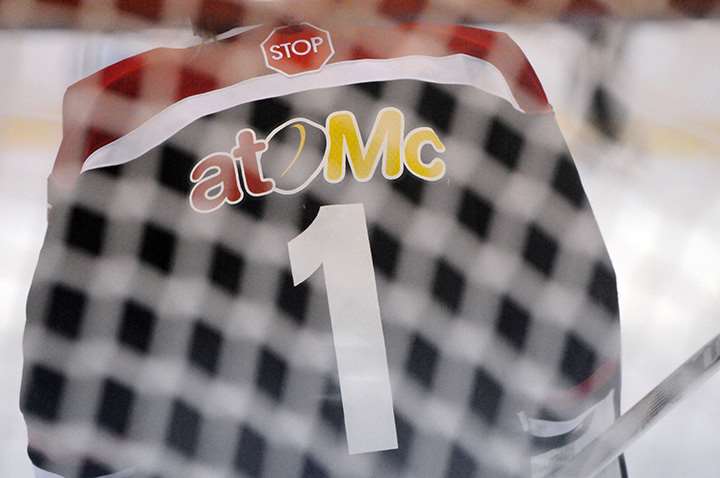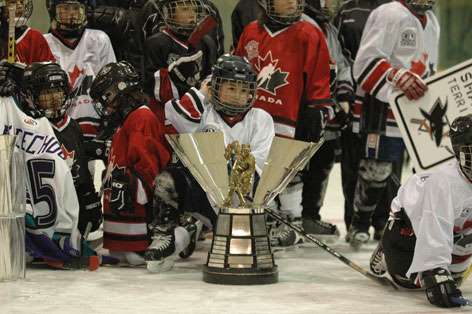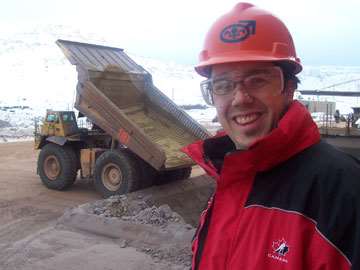Answers to questions asked by hockey parents
It's natural for parents or guardians new to minor hockey or hockey in general to have questions, whether they're about rules, equipment, registration, benefits, safety or something else. Hockey Canada's hockey parent FAQ offers answers to some of the most common inquiries.
Do you have a question that isn't answered? Submit your question and we will do our best to answer it.
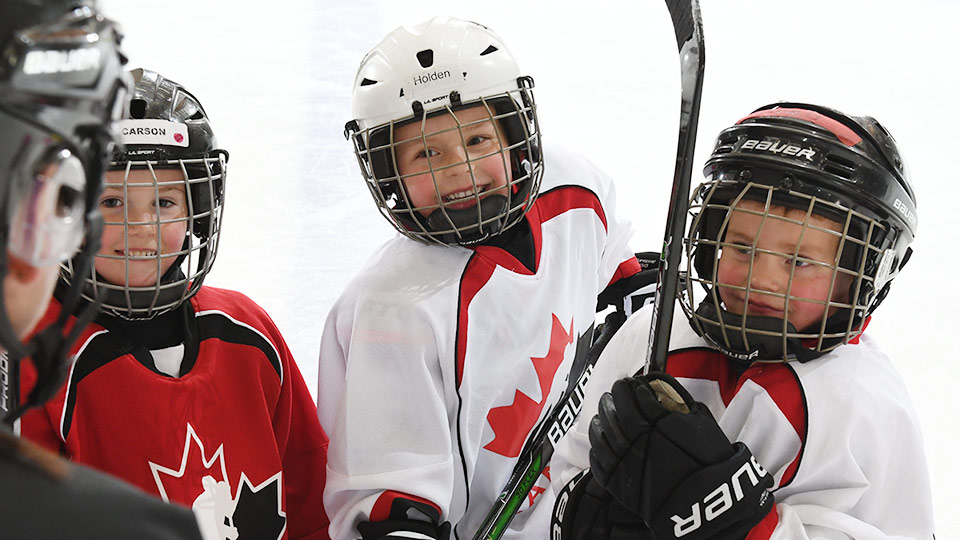
General
Why should my child play hockey?
How do Hockey Canada and local minor hockey associations ensure player safety?
What is the average weekly time commitment?
Registration
How does the registration system work?
What are the minor hockey age categories, and how are they determined?
How do local associations determine which players are assigned to AE and Rep teams?
Does Hockey Canada condone pre-formed AE and Rep teams?
How do I register my child? / How do I access my child’s registration information?
At what age can my child start playing organized hockey?
What should I know about unsanctioned hockey programs and/or leagues?
How will I get my income tax receipt?
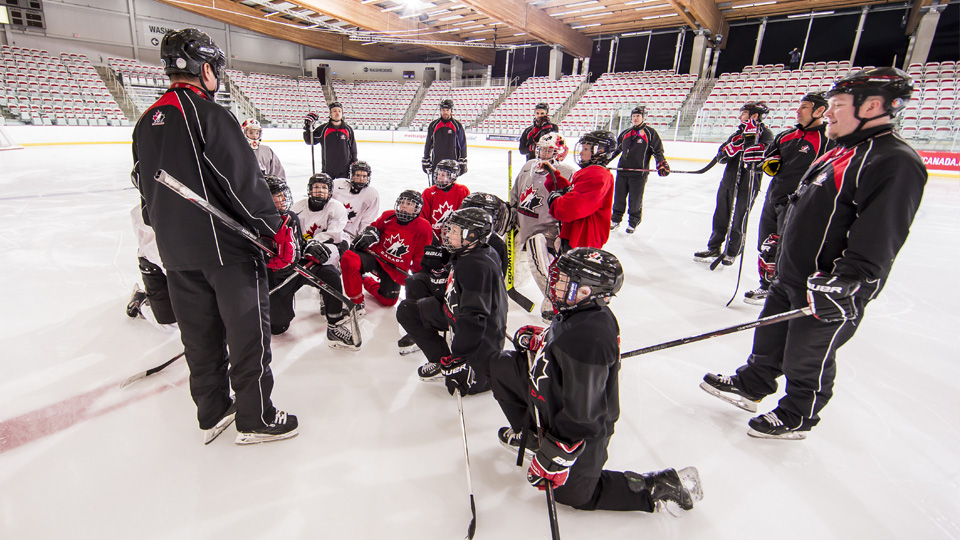
Coaching / Respect in Sport
What training do hockey coaches receive?
Are there professional coaches at the minor hockey level?
What is the Respect in Sport (RIS) program?
Who is the RIS Activity Leader Program for?
Who is the RIS Parent Program for?
How do I take the RIS Parent Program?
I already took RIS with another sport/ for another child. Do I have to take it again?
Why do I have to complete RIS?
How often do I have to recertify through RIS?
I want to become a coach for my child’s team. How do I register as a coach?
Do I need to be a former player in order to become a coach?
How can I learn the rules of organized hockey?
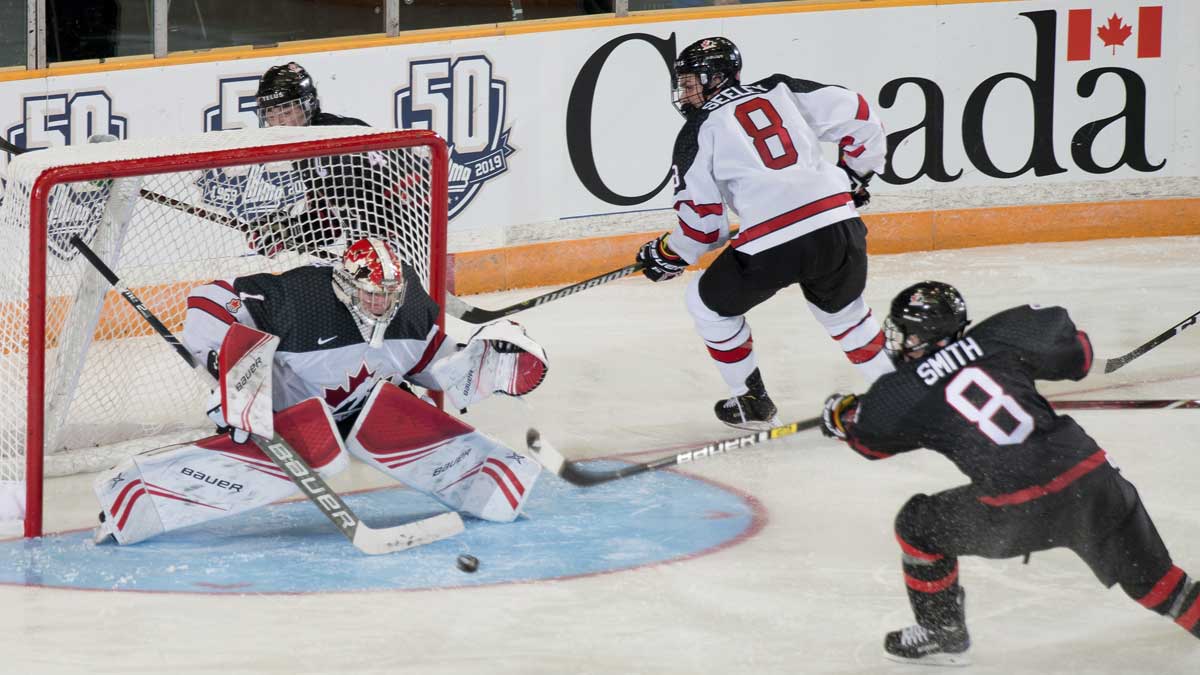
Hockey Canada Safety Program
Does every minor hockey team require a Safety Person?
What are the roles and responsibilities of the Safety Person?
Does the Safety Person have to be a medical professional?
What type of training does the Safety Person have?
How do I become a Safety Person for a team?
What training will I have to take?
Financial Support
What financial support is available to families?
Full-Contact Hockey
How are younger players prepared for the transition to body checking in hockey?
Are there non-body checking leagues?
Logistics, Communications & Scheduling
What if we’re moving to a new city? How do member transfers work?
What days of the week will my child be on the ice?
Do we have to travel out of town, and if so, how often?
What equipment does my child need? How much does it cost and where can I find it?
Apart from registration and equipment, what other costs are involved in hockey? How will they be paid for?
General
Q: Why should my child play hockey?
Hockey is a fun, family-friendly activity that offers people of all ages an opportunity to make new friends, get physically active, build important skills like hand-eye coordination and strategic thought, and create memories that last a lifetime.
Hockey is also a great sport for building character, and it gives those involved the opportunity to learn the value of teamwork, sportsmanship, and personal responsibility. In addition, the National Sports of Canada Act named hockey Canada's official winter sport, making it a quintessential part of the Canadian identity.
Q: What are the costs of hockey? How is the cost of hockey determined, and how much of my fees go toward licensing and insurance?
Hockey costs vary depending on the association, age group and skill level in question. Costs typically include registration, tournament fees, equipment costs, insurance, arena rental time and travel expenses. A 2011-2012 survey by Hockey Canada found that the average cost of hockey enrollment is $1,200 for registration and ice time.
Registration costs and tournament fees are set at the local association level. Equipment costs are set by manufacturers and retailers. Arena time costs are set by local arenas.
Insurance costs are set by Hockey Canada in partnership with BFL Canada, the official insurance benefits provider for all Hockey Canada-sanctioned tournaments, games, practices and events. The current insurance plan costs $21.30 per participant per season and provides $20 million in general liability coverage, plus accidental medical and dental insurance, as well as accidental death or dismemberment, and directors and officers liability insurance, to all players, coaches, volunteers and referees registered with Hockey Canada.
Q: How do Hockey Canada and local hockey associations ensure player safety?
Safety is Hockey Canada’s number one priority. That’s why Hockey Canada's doesw not permit fighting in minor hockey.
Any player who participates in a fight in any way will receive both a major penalty and a game misconduct penalty. All major penalties for fighting carry an automatic one (1) game suspension, two (2) games if the fight occurs in the last 10 minutes of play.
The instigator will also receive a minor penalty, and any player who retaliates after being struck will be given a minor penalty.
Repeat offenders may face indefinite suspension, a formal disciplinary hearing, or expulsion from the league. Hockey Canada members have the authority to assess further penalties for fighting at their discretion.
Q: What is the average weekly time commitment?
Depending on the level of hockey your child plays, your time commitment could range from just 3 hours per week for House League up to 6-7 hours per week (plus travel time) for Rep.
Registration
Q: How does the registration system work?
You can register your child with your local hockey association in person or online. In order to register your child, you will need to complete a form listing your child’s personal details like name, address, date of birth, hockey history and provincial or territorial medical insurance number.
If this is your child’s first time registering with a local hockey association, you may also be expected to provide a copy of your child’s birth certificate and two documents proving your place of residence. Suitable proof of residence could be a credit card statement, income tax assessment, school registration document, utility bill or proof of homeowner’s or renter’s insurance.
Q: How do I find out which local hockey association my child is designated to? Who sets the boundaries between associations?
Local minor hockey association boundaries are set by Hockey Canada members. You can access a zone map of local minor hockey associations, and find out which association zone you’re located in, through your Hockey Canada member or your local hockey association.
Hockey Canada has also created a tool that can help you find your local association:
REGISTER at this link https://register.hockeycanada.ca/register
Note: Local hockey associations are responsible for ensuring the accuracy of their geographical boundaries. Contact your local association to verify its boundaries and resolve discrepancies.
Q: What are the minor hockey age categories, and how are they determined?
The minor hockey age categories are:
- Timbits U7 – for players six years of age or younger
- U9 – for players seven and eight years of age
- U11 – for players nine and 10 years of age
- U13 – for players 11 and 12 years of age
- U15 – for players 13 and 14 years of age
- U18 – for players 15, 16, and 17 years of age
- U21 – for players 18, 19 and 20 years of age
Players are placed into age categories according to what age they will be by December 31 of the current calendar year.
Q: What levels of hockey are available? What are the differences between the levels, and what are the benefits of each one?
Most local hockey associations offer two to three levels of play in any given age category: House/Local League, AE and Rep. (Note that not all associations offer AE.)
House League hockey, sometimes called local league hockey, is a recreational level of play. Most teams at this league level have 1-2 practices and one game per week, making it easy to fit house league hockey into a hectic family schedule. Registration is typically inexpensive, and away games are rarely hosted more than an hour’s drive away. House league players are almost always given equal ice time regardless of skill or talent, and teams play in fewer tournaments throughout the season.
AE (Alternate/Additional Entry) hockey (not available in all associations) is a higher-calibre level of play for players who show strong skill and promise. AE teams are comprised of players who show sufficient skill to perform as Rep players, but, due to team roster size constraints, cannot be placed on the association’s primary Rep team. Most local hockey associations require players to try out for Rep hockey before they will be considered for an AE team. AE teams serve as the official alternates for Rep teams, and are typically formed in local hockey associations where there are enough skilled Rep-level (or near-Rep-level) players for two teams in any given age group. Not all communities have a population that can support an AE team, and therefore your local hockey association may or may not offer AE hockey.
AE teams typically play away games that are up to a 90-minute driving distance from their home arena, and play several tournaments throughout the season. Most AE teams have two 90-minute practices per week, plus one home game and one away game. AE teams often participate in overnight tournaments.
Rep (Representative) hockey is the highest calibre of hockey available in any given association. Rep teams typically have 11 to 15 players who represent the more skilled and talented players in their age group. Rep hockey is a fast-paced, highly-competitive level of hockey that offers exceptional players a challenge.
Rep hockey is about twice the time commitment of house league hockey. Expect a minimum of one practice, one development session and two games per week. Rep teams may also participate in overnight tournaments.
Q: How do local associations determine which players are assigned to AE and Rep teams?
AE and Rep teams host tryouts prior to the start of the hockey season. Head coaches on AE and Rep teams have the exclusive right to decide which players will be offered spots on their teams.
When evaluating potential players, AE and Rep coaches typically look for a certain set of attributes:
- Skill
- Skating
- Passing
- Shooting ability
- Puck control
- Playmaking ability (offensive and defensive)
- Sportsmanship
- Teamwork
- Respect
- Positive attitude
- Hard work
- Speed
- Skating
- Fore-checking
- Back-checking
- Preparedness
- Shows up on time
- Brings all necessary equipment to the rink
- Skates are sharp
- Wears a jersey
- Attitude Toward Learning
- Ability to recover from mistakes without becoming frustrated
- Ability to pay attention to instructions and follow the drill
- Leadership
- Takes initiative to help other players learn new skills
- Gives encouragement to other players
- Sets an example through hard work
- Skating Ability
Q: Does Hockey Canada condone pre-formed AE and Rep teams?
Absolutely not.
Determining the player roster for an AE or Rep team before tryouts encourages nepotism, infighting, the growth of ego, and unproductive and unhealthy group dynamics.
Hockey is about fair play, hard work, building community and having fun. Pre-formed teams undermine all of these values, and that is why pre-formed teams have no place under the Hockey Canada banner.
If you believe your child was unfairly denied a spot on an AE or Rep team due to bias, nepotism or factors unrelated to skill, attitude or performance, you should file a formal appeal with your local hockey association.
Hockey Canada encourages local hockey associations to bring in outside evaluators from other associations to perform player evaluations in order to ensure objectivity.
Q: When does registration start?
Exact registration start and cut-off dates vary across local hockey associations. However, most local associations tend to follow a similar schedule.
Early registration typically opens in the spring or summer (between April and June), with main registration usually taking place during July and August. Evaluations or try-outs typically happen in September.
It is up to each individual local hockey association to decide when to open and close player registration. Contact your local hockey association for exact open, cut-off and try-out dates.
Q: How do I register my child? / How do I access my child’s registration information?
You can register your child in person or online through your local hockey association. New players are typically expected to register in person at their local association. Returning players can register online through TeamSnap in areas where TeamSnap is available, or through your local Hockey Canada registration portal.
Contact your Hockey Canada member to learn more.
Q: At what age can my child start playing organized hockey?
Hockey Canada offers organized hockey starting at the Timbits U7 (cross-ice) level for children who will be either five or six years old on or before December 31 of the current hockey season.
After finishing the Timbits U7 program, players move on to a two-year U9 program. Children who will be turning seven years old on or before December 31 of the current hockey season are considered U9 players. All U9 players begin playing half-ice at the start of U9 Year 1 and transition to full-ice hockey during the second half of U9 Year 2.
Not all local hockey associations offer two-year U9 programs. In local hockey associations with one-year U9 programs, players play half-ice games during their U9 year and move up to full-ice hockey at the start of their U11 year.
Q: Why does Hockey Canada mandate cross-ice games for Timbits U7 players and half-ice games for U9 players?
The Timbits Hockey Canada U7 Program is designed to make your child’s first experience with hockey a safe and memorable one. This learn-to-play program scales hockey down to a smaller playing area that allows younger players to have more fun and better develop their skills.
You can learn more about the Timbits U7 program here.
Q: What should I know about unsanctioned hockey programs and/or leagues?
Non-member programs or unsanctioned leagues are leagues that are not affiliated with Hockey Canada and operate outside of Hockey Canada’s existing minor hockey system. Unsanctioned leagues are wholly responsible for their own oversight. It is up to each individual unsanctioned league to determine how issues like injuries, harassment and rule infractions are handled.
In some cases, unsanctioned leagues operate without a constitution, without bylaws, without insurance and with their own customized rulebook for game play.
Hockey Canada has no regulatory authority over unsanctioned leagues, and cannot hear appeals, insure players or ensure a consistently high standard of game play in unsanctioned leagues. It is for this reason that Hockey Canada does not condone, endorse or create affiliations with unsanctioned leagues.
If you choose to register your child in a non-member league, your child will immediately lose all Hockey Canada membership privileges for the remainder of the hockey season.
Q: Are there female-only teams?
Yes! While many hockey teams are co-ed, Hockey Canada and its partner organizations are also proud to offer a variety of female-only options for girls and young women interested in playing hockey. Over 89,000 girls and women play hockey in Canada, and female-only leagues are available in and around major cities in every province. Contact your local hockey association for details on female-only leagues in your area.
If you’re looking to introduce your daughter to hockey for the first time, there are a variety of co-ed options, such as the Timbits Hockey Canada U7 Program for children under seven years of age and the U9 age category for children under nine.
The NHL/NHLPA First Shift program, organized in partnership with Hockey Canada and Bauer Hockey, offers girls-only sessions in communities all across Canada. With an emphasis on fun, First Shift is an introductory six-week program that allows children aged six to 10 to try hockey for the first time.
There’s also the Esso Fun Days program, a hockey experience program that combines on-ice and off-ice instruction to give girls and women of all ages a first taste of organized hockey, with no fees and no obligations to sign up for a league.
High school-age players looking to continue playing organized hockey after graduation will find a number of female-only options. Most provinces have at least one female-only league, and there are tournament and championship opportunities for female under-18 players.
At the elite level, particularly skilled players between the ages of 15 and 17 can compete for the Esso Cup, Canada’s Women’s U18 Club Championship.
Q: How will I get my income tax receipt?
If you registered online, you will receive your income tax receipt as an email attachment. Look for an email from [email protected]. (If the email isn’t in your inbox, it could be in your Spam/Junk folder.)
You can also download your income tax receipt from TeamSnap. Visit your local hockey association’s website to access your portal. Your tax receipt will be under the My Registration History or Order History tab. You will need the ID and password you used to set up your account.
If you still cannot access your income tax receipt, contact your local hockey association’s registration department for assistance.
Coaching / Respect in Sport
Q: What training do hockey coaches receive?
All hockey coaches must obtain the appropriate coaching level as defined by NCCP ( National Coaching Certification Program) regulations, by the deadline set by the Hockey Canada member. Coaches are trained by the provincial and regional members and are certified by Hockey Canada and the Coaching Association of Canada. Individuals that need Coach 1 (Intro to Coach) or Coach 2 (Coach Level) must complete the online coach modules delivered through Hockey University (HU), and then fully attend and participate at an in-person coach clinic to achieve ‘Trained’ status.
Q: Are there professional coaches at the minor hockey level?
The decision as to whether or not to pay a coach rests with the individual local hockey association in question. Most associations choose to keep coaching a strictly volunteer position, while others opt to pay a modest honorarium of a few thousand dollars per season in order to assist the coaches with the various expenses they incur in order to coach hockey.
There are also coach mentors available to local hockey associations through Hockey Canada members. Coach mentors are experienced professionals who work with hockey coaches to develop their coaching skills.
Q: What is the Respect in Sport (RIS) program?
Respect keeps hockey fun.
Hockey is meant to be an enjoyable, character-building experience for players and parents alike. But one reason players and parents leave the minor hockey system is disrespectful behaviour in the arena. That’s why maintaining respect in the hockey environment is essential.
Respect in Sport data indicates that the No. 1 threat facing community sports today is harassment. Seventy percent of children drop out of organized sports by age 13 – mostly due to bullying, discrimination, abuse or harassment.
Respect in Sport aims to change that.
Respect in Sport promotes the safety and well-being of all minor hockey players, encourages productive communication with officials and coaches, and fosters a positive hockey experience for everyone involved.
By promoting respect on and off the ice, Respect in Sport is designed to prevent harassment and keep children involved in organized hockey, which means they can continue to experience the benefits of exercise and teamwork that come with playing minor hockey.
Parents and coaches are uniquely positioned to maintain a positive culture at the minor hockey level, which is why it’s so important for them to model good behaviour for Canada’s youth. Over one million Canadians are Respect in Sport-certified. With Respect in Sport, parents and coaches have the tools to maintain a fun, positive environment on the rink and to keep hockey fun for children of all ages.
You can learn more about Respect in Sport for Parents here. Additional details about Respect in Sport for Coaches can be found here.
Q: Who is the RIS Activity Leader Program for?
The Respect in Sport program is available in both English and French for both parents and coaches.
The RIS Activity Leader Program is for coaches, trainers and volunteers who will be leading team activities. Respect in Sport for Activity Leaders teaches activity leaders and coaches how to recognize the signs of bullying, abuse, harassment and discrimination, how to intervene in these situations, and how to prevent bullying, abuse, harassment and discrimination from happening in the future.
Q: Who is the RIS Parent Program for?
Respect in Sport for Parents equips parents with the tools they need to support their children and maintain a safe, healthy environment in which to play hockey. RIS for Parents is designed for parents of minor hockey players.
Q: How do I take Respect in Sport?
You can register for Respect in Sport through your provincial/territorial member.
RIS for Parents consists of six modules, each one lasting about 10 minutes. RIS for Coaches consists of six modules lasting 30 minutes each.
Registering for the Respect in Sport program costs $12 for parents or $30 for coaches.
You can access Respect in Sport through the Apple App Store or Google Play Store.
Q: I already took RIS with another sport and/or for another child. Do I have to take it again?
Not if your RIS certification is still valid. You will, however, have to register your certificate number with Hockey Canada. Contact your Hockey Canada member for instructions.
Depending on when you last completed RIS for Parents, you may have to recertify. Some member s require parents to recertify every 3-4 years. If your RIS certification has expired, contact your local member about renewing it.
Q: I already took RIS for Coaches (Activity Leader Program). Does this satisfy the RIS for Parents requirement as well?
No. The RIS for Activity Leaders and RIS for Parents programs are two very different programs. If you are both a parent and a coach, you will need to take both programs.
Q: Why do I have to complete Respect in Sport?
Completing RIS is a condition of participation in most local hockey associations. At least one parent or caregiver in your household must maintain active RIS certification for your child to be eligible to play hockey. Completing RIS is also a great way to model respect for your child.
Q: I already took the Hockey Canada Speak Out course. Do I still have to take the RIS Activity Leader Program?
The Speak Out program has been grandfathered in as the RIS Activity Leader Program. If your Hockey Canada Speak Out certificate is still valid, you may not need to complete the RIS Activity Leader Program. Check with your local hockey association to be sure.
However, you may still have to take RIS for Parents.
Q: How often do I have to re-certify through Respect in Sport?
Parents and coaches may be required to re-certify a minimum of once every four years. Please check with your local hockey association.
Q: I want to become a coach for my child’s team. How do I register as a coach?
Coaching your child’s team is a fun and engaging way to create quality family time and have a lasting impact on your child’s life. That’s why Hockey Canada has created an easy-to-follow road map for parents who want to become coaches.
The first step to becoming a hockey coach is acquiring NCCP ( National Coach Certification Program) training.
The NCCP is the Coaching Association of Canada’s flagship program. Hockey Canada members offer the NCCP at various clinics around the country.
Hockey Canada and the NCCP offer six levels of coaching certification in three categories. You can also pursue instructional streams to specialize in coaching skating, checking skills, goaltending or developing defenseman skills.
You can learn more about the different certification categories and instructional streams here.
You can register for NCCP training through Hockey Canada’s eHockey system.
Q: Do I need to be a former player in order to become a coach?
No. Officially, the only requirement to become a hockey coach is to complete the appropriate level(s) of Hockey Canada’s NCCP Training and Certification.
However, coaches are generally expected to have a knowledge of hockey technique and strategy that is best mastered by first playing the game. If you want to become a coach but have never played hockey before, you may want to find a local rink that offers drop-in adult hockey. You can also join the Adult Safe Hockey League, a recreational non-contact Hockey Canada member league with over 100,000 adult players across Canada.
Q: How can I learn the rules of organized hockey?
Hockey Canada’s Rule Book mobile app for Apple and Android devices is a convenient way to have the most up-to-date hockey rulebook at your fingertips.
Hockey Canada Safety Program
(Hockey Trainers Certification Program in Ontario)
Q: Does every minor hockey team require a Safety Person?
Yes. Under Hockey Canada regulations, each team must have one designated Safety Person who has completed the Hockey Canada Safety Program.
Q: What are the roles and responsibilities of the Safety Person?
As a Safety Person and team official, you play a leadership role in implementing effective risk management programs with your team, enhancing the safety of players and all involved in amateur hockey.
Q: Does the Safety Person have to be a medical professional?
Not necessarily. But Hockey Canada does recommend that the Safety Person take a first aid/CPR course as well as the Hockey Canada Safety Program itself.
Q: What type of training does the Safety Person have?
The Hockey Canada Safety Program teaches risk management practices, injury recognition and emergency action planning in the team environment.
Topics include:
- Roles and responsibilities of the Safety Person
- Risk management tips on the ice and off
- Hockey Canada Insurance Program
- Emergency action planning
- Recognition of serious and non-serious injuries in the game such as concussions, spinal injuries, and bumps & bruises
- On- and off-ice conditioning
- Responsible return to play
- Equipment fitting
Q: How do I become a Safety Person on a team?
If you are interested in becoming a Safety Person, contact your local hockey association.
Q: What training will I have to take?
A Safety Person must complete an 18-module online program available through Hockey Canada’s Hockey University. If interested, contact your local hockey association. It is also highly recommended that the Safety Person completes a standard first aid course and a CPR course.
Financial Support
Q: What financial support is available to families?
Hockey is for everyone. No child should be denied the opportunity to play hockey due to a difficult financial situation.
Hockey Canada and all of its partner organizations work hard to ensure that minor hockey registration fees are as affordable as possible across the country. However, it recognizes that equipment prices, tournament fees and other expenses can quickly drive up the cost of enrolling your child in minor hockey.
If you are in need of financial assistance, there are programs available that can help subsidize the cost of your child’s minor hockey registration and equipment:
The Big Play is a joint charity program administered by Hockey Canada in partnership with Canadian Tire Jumpstart Charities. Eligible families can receive up to $500 per child through the program. This money can be applied toward your child’s registration fee or toward a purchase of hockey equipment at any Canadian Tire retail location. Financial assistance is provided on a first-come, first-served basis. Visit The Big Play website to learn more or to apply for funding.
KidSport Canada is a national not-for-profit organization dedicated to providing children all across Canada with opportunities to play sports of all kinds. You can apply for financial assistance through your local KidSport chapter, which you can find on the KidSport Canada website.
YMCA Canada also offers a financial assistance program, YRASP (YMCA Recreation, Arts, and Sports Program). The YRASP program provides funding of up to $500 per child per year to cover registration, equipment and transportation costs for organized arts, recreation and sports programs. YRASP is available to families with children aged 17 or under whose annual household income is under a certain threshold. You can apply for YRASP through your local YMCA chapter, which you can find on the YMCA website.
The NHLPA (National Hockey League Players Association) operates the NHLPA Goals & Dreams Fund, a charitable fund that supports grassroots hockey by donating money and equipment to volunteer-based grassroots hockey organizations. Eligible organizations can receive brand new skater and goalie equipment for up to 50 children.
Your Hockey Canada member or local hockey association may also have its own financial assistance programs. Contact your member or local hockey association to learn more.
Full-Contact Hockey
Q: How are younger players prepared for the transition to hockey with body-checking?
Body-checking is an essential skill in modern hockey, but one that must be mastered prior to use in order to ensure the safety of all players. That is why, in September 2013, Hockey Canada announced a ban on body-checking at the U13 level. All games played at U13 and below are non-body-checking games. Hockey Canada also implemented a new national coaching program oriented around teaching safe body contact and body-checking techniques.
Players in contact leagues transition to body-checking hockey at the U15 level. Hockey Canada has mandated a new checking model that gradually teaches players the skills they need to safely play contact hockey.
You can learn more about the checking skills model here.
In an effort to ensure all players feel comfortable making the transition, Hockey Canada has created an extensive library of instructional videos and written documentation for coaches who want to teach checking skills to their players. These materials are available online through Hockey Canada’s Coaching site.
Q: What policies and procedures has Hockey Canada mandated to prevent concussions in minor hockey?
Concussions are serious injuries that can cause long-term health issues and impairments. That’s why Hockey Canada has developed a full-scale array of concussion prevention programs and policies.
In addition to implementing a zero tolerance policy for head contact during game play, Hockey Canada has also created a Concussion Prevention Resource Centre and Concussion Toolbox for free use by coaches and players. The Hockey Canada concussion policy is available through the concussion toolbox. It is also important to contact your Hockey Canada member to learn about local initiatives in this area.
One of the key components of preventing concussions in hockey is player skill development, which is why Hockey Canada has created the Hockey Canada Network, a mobile app for Apple and Android devices containing articles, drills, videos, plans and game clips that teach players a variety of critical hockey skills. The comprehensive practice plans give coaches ready-to-use drills that teach safe checking techniques.
Q: Are there non-body-checking leagues?
Yes, non-body-checking leagues do exist for older hockey players; however, the size of the community will often determine if there are options for body checking and non-body-checking leagues at the U15 and U18 levels in the Hockey Canada system.
Hockey Canada strongly advocates for safety in minor hockey and promotes non-body checking options in minor hockey.
Logistics, Communications & Scheduling
Q: What if we’re moving to a new city? How do player transfers work?
Player transfers are typically quite flexible. You can transfer your child from one association to another within the same Hockey Canada member, from one Hockey Canada member to another, or, thanks to an ongoing agreement between Hockey Canada and USA Hockey, to any USA Hockey-affiliated local hockey association in the United States, upon providing satisfactory evidence that a family move has occurred.
International transfers to or from countries other than the United States are governed by IIHF international transfer regulations. Visit the IIHF website for more information on IIHF-governed transfers.
Contact your local hockey association for the appropriate transfer form.
Q: What days of the week will my child be on the ice?
Practice and game schedules are set by local hockey associations. Contact your local hockey association for your child’s schedule.
If game and practice schedules conflict with your work responsibilities, you should talk to the other parents on your child’s team about coordinating a carpool. Carpooling is a fun and easy way to ensure all minor hockey players can participate regardless of their parents’ work schedules.
Q: Do we have to travel out of town, and if so, how often?
Each team’s schedule is set by the local hockey association in question. Most teams typically have a fairly even mix of home and away games. Starting in their U9 year, House League teams typically play away games within a one-hour drive of their home arena. Rep teams may travel as far as 90 minutes for away games.
Most hockey teams typically have one home game, one away game and one to two practices every week. This means you can reasonably expect to travel less than three hours per week round-trip.
Your local hockey association will release your team’s schedule before the start of each hockey season.
Q: What equipment does my child need? How much does it cost and where can I find it?
All hockey players are required to have a full set of equipment in order to play. For your convenience, Hockey Canada has prepared a full and exhaustive list of every piece of equipment your child will need.
Hockey Canada’s equipment fitting guide states that in order to ensure player safety, all hockey players must have the following equipment:
- Helmet (must be CSA-certified)
- Mouthguard
- Neck guard (must be BNQ-certified)
- Shoulder pads
- Elbow pads
- Gloves
- Groin guard (jock/jill/cup)
- Hockey pants
- Shin pads
- Hockey socks
- Skates
- Hockey stick
- Practice jersey
- Equipment bag
You can find a full guide on how all of this equipment should fit your child starting on page 66 of Hockey Canada’s official Safety & Teamwork Guide.
There are also several optional pieces of equipment that make your child’s hockey experience even better:
- Skate guards – Skate guards protect your child’s skates from accidental damage, keeping them sharper for longer.
- Water bottle – Hockey is a fast and demanding sport, and hydration is essential. It is recommended that players have their own dedicated personal water bottle.
- Pucks – While pucks will be provided at all official league games, you’ll also want to ensure your child’s team has a healthy supply of spare pucks on hand for practices, warm-ups prior to games and gaps between tournament games.
- Stick tape – Your child’s stick should be taped at the top and the blade. Taping the top will ensure that your child can keep a firm hold on the stick, while taping the blade will improve the stick’s grip and allow for better puck control.
- Sock tape/Shin pad straps – This clear tape holds your child’s socks and shin pads in place. Some shin pads come with velcro straps, making sock tape unnecessary. Alternatively, you can purchase velcro shin pad straps that you can affix to strapless shin pads.
- Spare stick – You never know when a stick is going to break. That’s why it’s always a good idea to carry a spare stick to games and tournaments. Your child should have his or her own spare stick to ensure the best possible hockey experience.
- Spare laces – Loose skates are uncomfortable and can make it difficult for your child to skate properly. If your child’s laces fray or break on the ice, you’ll want to ensure you have spare laces behind the bench so your child’s coach can quickly replace the damaged laces.
- Stick wax – Stick wax prevents the buildup of snow and ice on the blade of a hockey stick, allowing for better puck control and extending the life of the stick.
Q: Apart from registration and equipment, what other costs are involved in minor hockey? How will they be paid for?
While not mandatory, there are several additional costs that teams may incur during the course of a season.
Coaching Staff Gifts
At the end of every hockey season, it is generally customary for players and parents on a team to buy a small but meaningful gift for each member of the team’s coaching staff.
This gift could take the form of a hockey-themed coffee mug, a notebook, a framed team photo, a small piece of wall art, a personalized puck, a commemorative engraved whistle or a gift card.
In many cases, instead of each individual family buying a separate small gift for the coaching staff, teams will pool money together to buy one large team gift. This team gift could be something like tickets to a professional hockey game or a donation made in the coaches’ names to their favourite charity.
Team Clothing & Merchandise
Parents who wish to go one step further to support their local hockey association may choose to purchase team clothing or team merchandise. Almost every local hockey association in Canada has team jerseys, hats, hoodies, toques, ball caps and pucks available for purchase. Teams and associations often use the proceeds from this merchandise to cover costs related to travel, tournaments and league registration.
Travel & Tournament Fees
When travelling to away games, teams are responsible for their own travel costs like gasoline, food, parking and toll fees.
It is up to the parents and coaching staff on each individual team to determine how these expenses will be paid. Some teams choose to have each family pay their own way. Others will pool funds to ensure costs are distributed evenly across all families on the team.
Many teams organize fundraisers to subsidize parents’ travel and other associated costs. Common fundraisers include selling chocolate bars, holding a lottery, running a car wash or pancake breakfast, or auctioning off something valuable. Teams should ensure that their local hockey association approves any type of fundraising initiative.
Each team is responsible for ensuring that its fundraising activities comply with local, provincial and federal laws and are approved by its local hockey association.
- <
- >
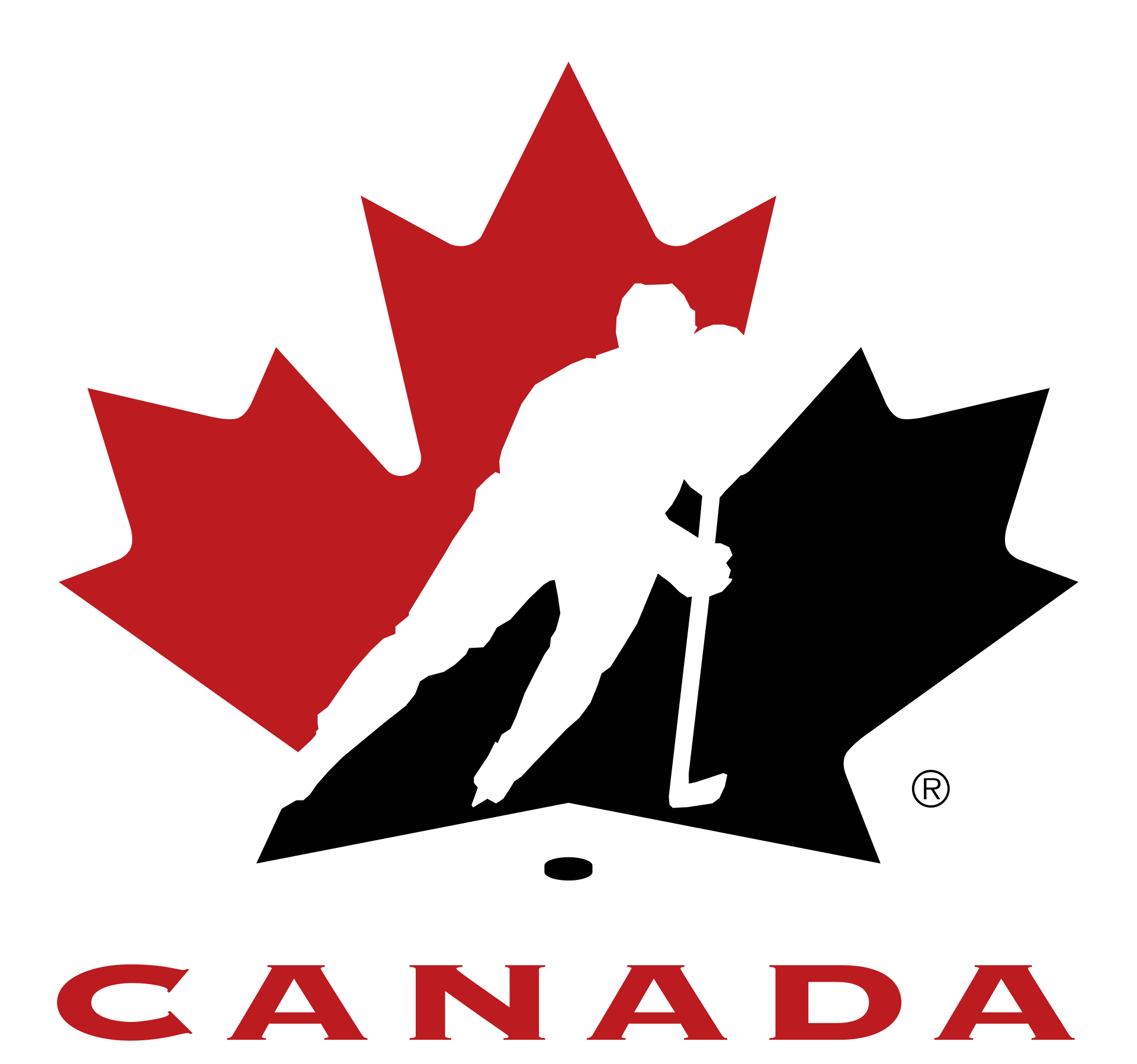
 HOCKEY CANADA
HOCKEY CANADA

